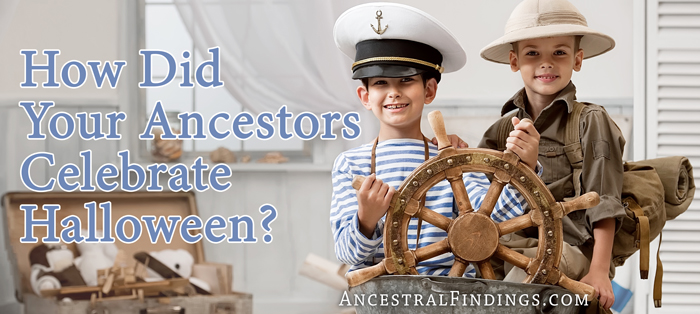Celebrations of the solstice and deceased ancestors have been going on around the world for centuries. While many cultures have similar celebrations, the one that has the event most closely associated with our modern Halloween originated in Ireland and some areas of Scotland. The pagan festivals to honor the dead transformed by the 1500's to include costuming, also called “mumming” or “guising.” This practice involved people of all ages going from house to house in disguise and reciting poetry, literature, Bible verses, or songs in exchange for food.
In Scotland, the practice also involved an element of “trickery,” as those who were not welcomed at the houses they went to threatened retribution in the form of “mischief” if they were turned away. Houses that did donate food were to expect good fortune for their generous deed, while not donating may mean misfortune. The costumes that were worn were meant to imitate the spirits that were thought to roam the countryside at this time of year, and the disguises were believed to be able to ward off unwanted spirits. Gradually, over time, the costumes evolved from merely painted faces to elaborate costumes of monsters, and then costumes of anything the revelers liked.
By the early 20th century, the practice of costuming oneself and celebrating Halloween moved into England and the United States. This also included the custom of playing pranks. This is around the time the jack-o-lanterns began to make their appearance in form of carved turnips, and later pumpkins, to light the way of the costumes.
All Hallow's Eve, as the celebration was originally called, was part of the Catholic church's religious calendar since Medieval times, and celebrated as a feast day. Immigrants from England to Maryland carried this tradition with them, though the Puritans of Massachusetts and the rest of New England opposed the custom, just as the opposed Christmas and other Catholic holidays they believed to have pagan undertones.
Many immigrant communities throughout the United States practiced some kind of celebration on Halloween, even from the earliest days of colonization. However, it was not until the early 20th century that a Halloween like anything we know today was commonplace among all Americans, regardless of religion.
The first reference to a practice resembling modern trick-or-treating in the United States appears in a northeastern newspaper in 1915. However, it was still called “guising” then, like it was in Ireland and Scotland. The first recorded reference of it being called trick-or-treating is in a 1927 newspaper in Alberta, Canada, and the term made its way to the United States soon afterward.
Many Halloween postcards were produced in the United States showing children in costumes in the 1920's, as the celebration began to be associated with children then. Some trick-or-treating seems to have gone on during this time, but it did not become common practice until the 1930's. It is mentioned by name in a national, and not regional, publication for the first time in 1939. After that, the modern way of celebrating Halloween was firmly established as an American tradition.



